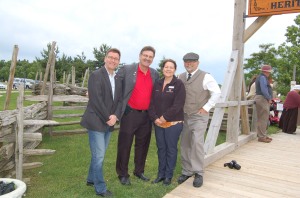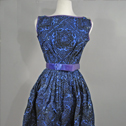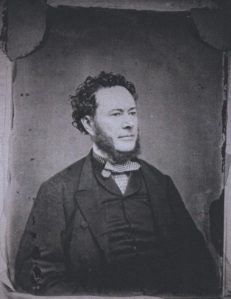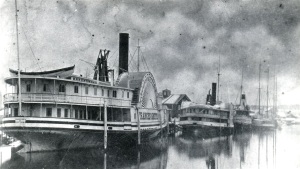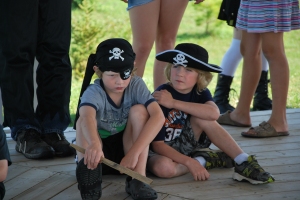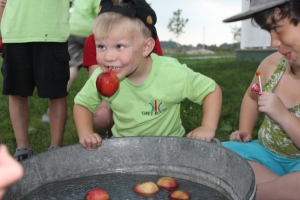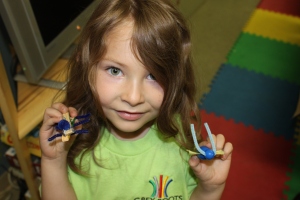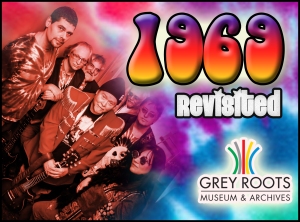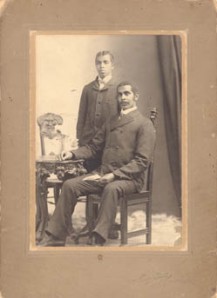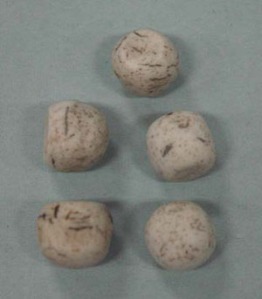There is an interesting story that must not be forgotten, and it is the one of Mrs. Eaton and her female volunteers at the Canadian Greys’ Rooms, which eventually became fondly remembered by the citizens of Grey County and its veterans of the First World War as the “Grey Rooms”.
The “European War”, as it was known in the 1914-1915 period by Grey County residents, involved the participation of many female volunteers, who did their best to help “the boys” who had volunteered for service overseas. Many women joined local patriotic societies and Red Cross groups, and made various articles, knitted socks to send overseas, and did other work to help the war effort. Mrs. Eaton did something rather extraordinary. She decided to set up a home-away-from-home club in London, England for those serving from Grey County to visit whenever they were on leave. She apparently was not the only one to set up such a club, and there were a few regimental sorts of clubs where Canadians could go in England (I’m not sure how many). But I doubt many of them were organized and primarily funded by a widowed lady in her fifties.
Annie Emma Eaton was a social leader in Owen Sound. She was born in Toronto in 1862, and was from a well-to-do family, as her father, Robert Jaffray, owned and operated The Globe publishing company / newspaper, and became Senator Jaffray. In 1885, Annie married an Englishman, Christopher Eaton, and moved to Owen Sound, where he and his brother had the Eaton Brothers brewery (established in the early 1880s). Annie and Christopher’s only child, Jaffray Eaton, was born in Owen Sound on June 6, 1886. Annie helped start a Ladies’ Music Club in town. She also organized small reading group meetings among the ladies of Owen Sound by founding the Angelica Shakespeare Club. In 1905, she was one of the women in town who listened to a visiting Toronto woman talk about the Imperial Order of Daughters of the Empire, an organization that was founded in 1900 to assist Canadian soldiers who had served in the South African War (the I.O.D.E. did fundraising and the provision of comforts). Mrs. Eaton soon became the first Regent of the Earl Grey Chapter of the I.O.D.E. in Owen Sound when it was established in 1905, and this involvement likely factored greatly into her later interest in helping the military personnel from Grey when war returned.
On Feb. 22, 1914, Christopher Eaton died. Later on, in August, the European war began. Mrs. Eaton became very involved in patriotic war work. Her son had to come home from Toronto, where he was working at the Toronto Globe as a military reporter, in order to help manage the family’s brewery business, which was then known as the Eaton Malting Company. Jaffray also was very involved with the 31st Grey Regiment. He had started with the 31st as a Private, and was eventually a Captain in 1914, and then was promoted to Major Eaton. He had volunteered after the European war broke out, and was briefly with a machine-gun battalion at Hamilton. When the 147th Grey (Overseas) Battalion was formed on November 27, 1915, he transferred to it, and had an important role in the mobilization of the unit. Major Eaton was the battalion’s Quartermaster, as well as its second in command.
The 147th Battalion recruited and trained in the winter of 1915-1916, and was presented with its Colours at the new Camp Borden location, on August 22, 1916. Colonel G. F. McFarland, Major Eaton, Lieutenant T. J. Rutherford and others of the 147th received the Colours. Not too many people from Owen Sound were in attendance. However, Mrs. Christopher Eaton was there, as a representative of the Women’s Patriotic League. I wonder if she had already decided by then that she would go overseas as well? She was involved with the I.O.D.E. of Owen Sound, who had purchased a recreation tent and sports equipment for the boys of the 147th. Perhaps she realized that once they left Ontario, they would really miss having a link to home and recreation, and that there was a need for someone to help them.
In 1916, the 147th Grey (Overseas) Battalion, also known at the time as the “Canadian Greys”, were ready to leave Canada for England. They were delayed in Nova Scotia from embarking by an outbreak of diphtheria among the men. Eventually, in November, 1916, they survived the five-day crossing of the Atlantic on the S. S. Olympic (a sister ship of the ill-fated Titanic), with many of them quite worried about enemy u-boats, as there were about 10,000 troops aboard. In England, they did more training work. Lance-Corporal Johnstone D. Urquhart of Owen Sound (838201) wrote in his diary that they had left Nova Scotia on November 13th. On November 26th, he was at Shoreham-by-the-Sea, and sent his 147th pocket diary back home to his sister Bea, with a notation “Our meals are a little slim at present, but I think that they will improve”. The 147th was to their disappointment, “broken up”, and placed into the 8th Canadian Reserve Battalion of Central Ontario at Shorncliffe. The men were eventually drafted from there to other units, a few at a time, mostly to the 4th Canadian Mounted Rifles, and the 58th Battalion.
Mrs. Eaton had followed the 147th , despite the danger of travelling across the Atlantic. She likely was not able to bring much with her. She used her family connections with the Toronto Globe to rent some upstairs rooms at the Globe’s London office. The Owen Sound Sun reported in December, 1916, that they had received a letter from her, stating that she, Mrs. R. Howey, Miss Waud, Mrs. Boulter and Mrs. Ball, were making efforts to set up special rooms for Grey County soldiers in London, England. The location was 20 Craven Street.
The Globe’s building was on a quiet side street, located between the Thames River and the “traffic-crowded Strand”. The rooms were provided with Grey County newspapers, a gramophone for musical entertainment, a writing desk and stationery for letter writing, some chairs, and sometimes there were card games underway. There were often about ten to twenty fellows visiting at a time. There was a fireplace to sit by, and a name quilt from the Annan area of Sydenham Township was hung up on display, as a reminder of home (it was brought back to Canada by a Mr. Bell, as his wife’s name was on it, but it is no longer known what happened to it). The rooms were open from 9 a.m. to 6 p.m. At noon a light luncheon was provided. At 4:30 p.m., a tea was served with sandwiches, toasted buns, butter, jam, and lots of milk and sugar (items that were a treat for the men, as there was strict camp rationing and they usually did not get these). There was an electrical toaster for toasting the buns, and it had a tendency to burn them, so it would usually be operated by one of the “boys” who was more familiar with electrical appliances. There was a cloth banner, with CANADIAN GREYS’ ROOMS stencilled on it. Brigadier Thomas J. Rutherford told museum staff in 1970 that it had been hung up as a “welcome sign” at the Grey Rooms (and it now is in the collection at Grey Roots). When the families and organizations back home in Grey County learned about “the Rooms”, they began to send parcels of food, or cakes, or monetary donations to Mrs. Eaton. Mrs. Eaton and the volunteers sent letters to the Owen Sound newspapers, which helped communicate information to the families and friends back home. A second Grey County unit, the 248th, also arrived in England, in 1917, and similarly was broken up and used for drafts. The Rooms also became a respite for them, and for Grey County men who were serving in other units as well.
Everyone who called at the Rooms was asked to register, and lists of addresses were kept, and letters and parcels were forwarded or held until they could be collected by the soldiers. The volunteers scanned the casualty lists and contacted any Grey County men that they could, via the Red Cross or the Record Office, and sent letters to and visited wounded / convalescing soldiers when they could. For the men on pass from France or Belgium, or freed from the hospitals during their convalescence, it was the place to visit, especially when they were sick and tired of the war, or homesick, to receive a warm welcome from people who knew their home towns and what life was like in Canada. Mrs. Eaton and her friends also could suggest where the good shows were, some tourist attractions to see, and fostered a lot of camaraderie. The fellows told a lot of stories, and there was reportedly some “merriment” and fun at the Rooms.
But there also was sadness…
Unfortunately, Mrs. Eaton’s son was killed in action on October 26, 1917, while he was serving with the 4th Canadian Mounted Rifles in Belgium at the battle of Passchendaele. He had allowed his rank to revert, so that he could join the 4th C.M.R., as Lieutenant Eaton. At Passchendaele, the objective he was about to do was to try and take out an enemy pillbox, and he had talked to his friend, Lieutenant Thomas Rutherford, just briefly before he was killed, very likely by friendly fire during a barrage. Sixteen months later, Rutherford returned to the area and found his friend Jaff’s bones, and those of another man, his Runner, and had them buried by a Belgian farmer. October 26th 1917 had been a very dark day for the Greys, as there were about 60 casualties, mostly fatalities. It also was the day that Owen Sound’s 19-year-old Tommy Holmes of the 4th C.M.R. earned a Victoria Cross. An Owen Sound newspaper article “Major Jaffray Eaton and Capt. Jack Campbell Killed” mentioned that Mrs. Eaton had sent a cablegram to Toronto to let Jaff’s friends at the Globe know about his death. She stopped working at the Grey Rooms for a little while, at the insistence of her volunteers and doctor, to deal with her grief, but she soon was back.
Mrs. Eaton’s chief assistant was Mrs. Rosalie A. Howey, always referred to as Mrs. Richard Howey at the time. Mrs. Howey’s husband, Dr. Richard Howey, had been the regimental surgeon for the 147th, and became a medical officer / surgeon at a London hospital with the C.A.M.C. (Canadian Army Medical Corps). The Howeys were also from Owen Sound. Mrs. Howey did not travel overseas at the same time as Mrs. Eaton, but likely quite soon after. She visited her husband’s nephew, Victor Howey, when he was hospitalized in England at one point. I’m guessing that she likely made other hospital visits as well.
Mrs. Boulter and Mrs. Ball were former Owen Sounders, who were living in England when the war broke out. They helped out Mrs. Eaton by providing furniture and other useful items from their own homes, and also did volunteer work at the Rooms. When they were young women in Owen Sound in the late 19th-century, they were the Wilcox sisters, Helen and Isabel. Their parents had a store in town, and they and their mother were involved with the King’s Daughters, an organization that helped provide gifts of food and used clothing to help the poor in town. Therefore, they had a lot of prior experience in helping out others. Mrs. Adam J. Loughborough Ball (Isabel), and her husband, kindly offered the hospitality of their own London house as well, as another place that Grey County fellows could visit. In the post-war period, Isabel’s sister, Mrs. Boulter (Helen) visited her home town of Owen Sound. Helen died in 1966. Isabel died in 1968.
The volunteer “Miss Waud” I’m guessing was a daughter of Mrs. Margaret Ann Miller Waud, who was already in England, working for the Canadian Red Cross (she was posted by them in England from 1915-1918). Mrs. Waud was a former Owen Sounder, whose husband Edward Waud was a Molson’s Bank general manager. The family had moved to Woodstock, and then later to Montreal in 1910. Mrs. Waud had lost a daughter, Dorothy, in 1908, and her only son, Major E. W. Waud, who was with the 13th Battalion, was killed in October, 1918. I suspect that Mrs. Waud was one of Mrs. Eaton’s contacts for Red Cross information. Mrs. Waud died in April, 1936 and was survived by a daughter, Mrs. Ludlow Haskell of Westmount.
There also was a “Miss Yule” that helped somehow, but likely in Canada. She was likely a relative of Lieutenant J. L. Yule of Owen Sound, who served with the 4th C.M.R. He was wounded by a gas attack on 28/8/1918 and his name was recorded in a 1918 casualty ledger that was kept at the Grey Rooms by Mrs. Eaton. Lieutenant Yule had a sister, Miss Ella Yule, at Harriston, Ontario. Prior to the war, Joseph Lynn Yule had been a popular organist and choir leader in Owen Sound. In 1917, Lt. Yule had recruited for the 248th Battalion, and later was transferred to the 4th C.M.R. He survived the war, returned to his musical work, but passed away in 1930.
Miss Margaret Bird was already in England when Mrs. Eaton arrived. Miss Bird was from Bracebridge, and if I have found the right person on the Internet, she was born in 1883. She was educated at a private school in Toronto, and enjoyed travelling. Her father, Henry James Bird, reportedly had sent her overseas to look after a club for overseas soldiers from Muskoka in London, England. She had a fiancée who died during the war. She died on Sept. 25, 1973. It appears that Miss Bird did a lot of letter writing at the Rooms. A convalescing soldier, Private Jack Crowe (of Owen Sound), referred to her as “The Bird”, and was grateful for her letters. The Grey Rooms volunteers also had sent a box of goodies to Pte. Crowe’s hospital, but he had been transferred, and some other patients enjoyed eating the treats in his stead. The patients sent a thank-you letter to him, and he sent on his thanks to the Grey Rooms.
An April 8, 1919 article in the Owen Sound Sun-Times recorded when Mrs. Eaton returned:
MRS. EATON HOME FROM ENGLAND
Founder of Grey Rooms Returned to Her Home Town on Thursday
No soldier returning from France is receiving a more cordial welcome these days than Mrs. Eaton, who came home very quietly last week and whose many old friends in Owen Sound are very glad to have the privilege of saying “Welcome Home!” to one who has done so much for the men from both town and county. But besides these old friends are hosts of new friends, whose welcome is just as cordial, and whose gratitude to Mrs. Eaton for her work in the Grey Rooms in London, cannot be expressed. Mrs. Eaton opened those rooms at her own expense and through the months of trying war experiences never failed in her happy cheerful welcome to Grey County men. Even when her only son, Lt. Jaffray Eaton was killed in France [actually Belgium], Mrs. Eaton continued her work as gallantly as her soldier son, planning for the Christmas festivities at the London headquarters of the men from town and county. Both Mrs. Eaton and Mrs. Howey are planning to help the returned men in every way possible, feeling there is a big problem facing the men who are coming home…”
Mrs. Eaton was honoured at Buckingham Palace for her war work, and became “Lady Eaton”. If anyone finds out what day that event occurred, it would be nice to have the information at Grey Roots someday in our archives.
After Mrs. Eaton and Mrs. Howey returned to Owen Sound, a civic reception was held in late June, 1919, at Harrison Park to honour their service. This event was sponsored by the I.O.D.E, as well as the local Patriotic League, and it also honoured three local nurses, Nursing Sister Olive Carson, Miss Mary Pollock, and Nurse D. Carson. The honoured guests all received flowers, and Mrs. Eaton and Mrs. Howey also were each presented with a necklace, as well as special pins of double bars of gold, with the town crest on a small shield. The bars were set with two diamonds and two pearls. (Croft, Melba, Growth of a County Town, p. 291).
Mrs. Eaton lived in Owen Sound after the war and adopted an eleven-year-old English girl / niece named Vivienne Paice, who lived at the “Eagle’s Nest” (the Eaton residence) with her for a while. Vivienne recalled that a lot of visitors came by to see her aunt, and have a cup of tea with her. When Vivienne attended college at La Jolla, California, Mrs. Eaton travelled there in 1924 to attend her graduation, and then was to next go onwards from there on another trip to England. Her health was deteriorating, so all of her Owen Sound friends were glad that she was going away for an extended and hopefully happy visit.
In 1931, Colonel Thomas J. Rutherford, who had served with Jaffray Eaton in both the 147th and the 4th Canadian Mounted Rifles, gave her a fine tribute: “No history of this County’s part in the war, however abridged, would be complete without the mention of an institution in London, England, which meant much to every Grey soldier. Here a County lady (whose only son gave his life), kept open house and dispensed food and homely cheer and mother love to all the boys from Grey. The name of Mrs. Eaton can never be forgotten until the last pilgrim of the Great War, who went from this County, is numbered with the comrades who have gone before. Her name and her work, like the sacrifices of the many, many, other mothers of this County, who gave their sons in that titanic struggle, always must be honoured.” (Marsh, Edith, A History of the County of Grey, 1931, p. 371).
After she died at Toronto, on April 14, 1937, her body was brought back to Owen Sound. Mrs. Eaton was honoured by the survivors of the former 147th and 248th Battalions with a military funeral at St. George’s Anglican Church. The funeral cortege saluted her west side home as they made their way to Greenwood Cemetery. She had a Union Jack draped on her coffin. A volley was fired over her open grave, and Last Post and Reveille were played.
A monument on the grounds of St. George’s Anglican Church was later donated to record the gratitude of the survivors of the local battalions. When it was dedicated, Mrs. Howey and Miss Bird attended the ceremony, and Mrs. Howey unveiled it. The Annie Jaffray Eaton Chapter of the IODE at Owen Sound (created in 1987, but now disbanded) also perpetuated Mrs. Eaton’s name. Here at Grey Roots, we perpetuate her story whenever we can, and always hope that if anyone finds an artifact or letter or photograph with “Grey Rooms” or the “Canadian Greys’ Rooms” on it, that they will donate it someday, to add to the documentation about the very kind endeavors of Mrs. Eaton and her friends, who helped so many fellows when they were far away from their homes.
by Joan Hyslop, Registrar

Banner from the Grey Rooms (now in the Grey Roots Collection)
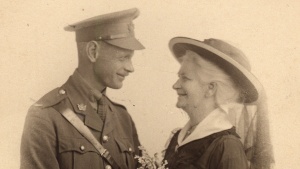
Image of Annie & her son Jaffray together

